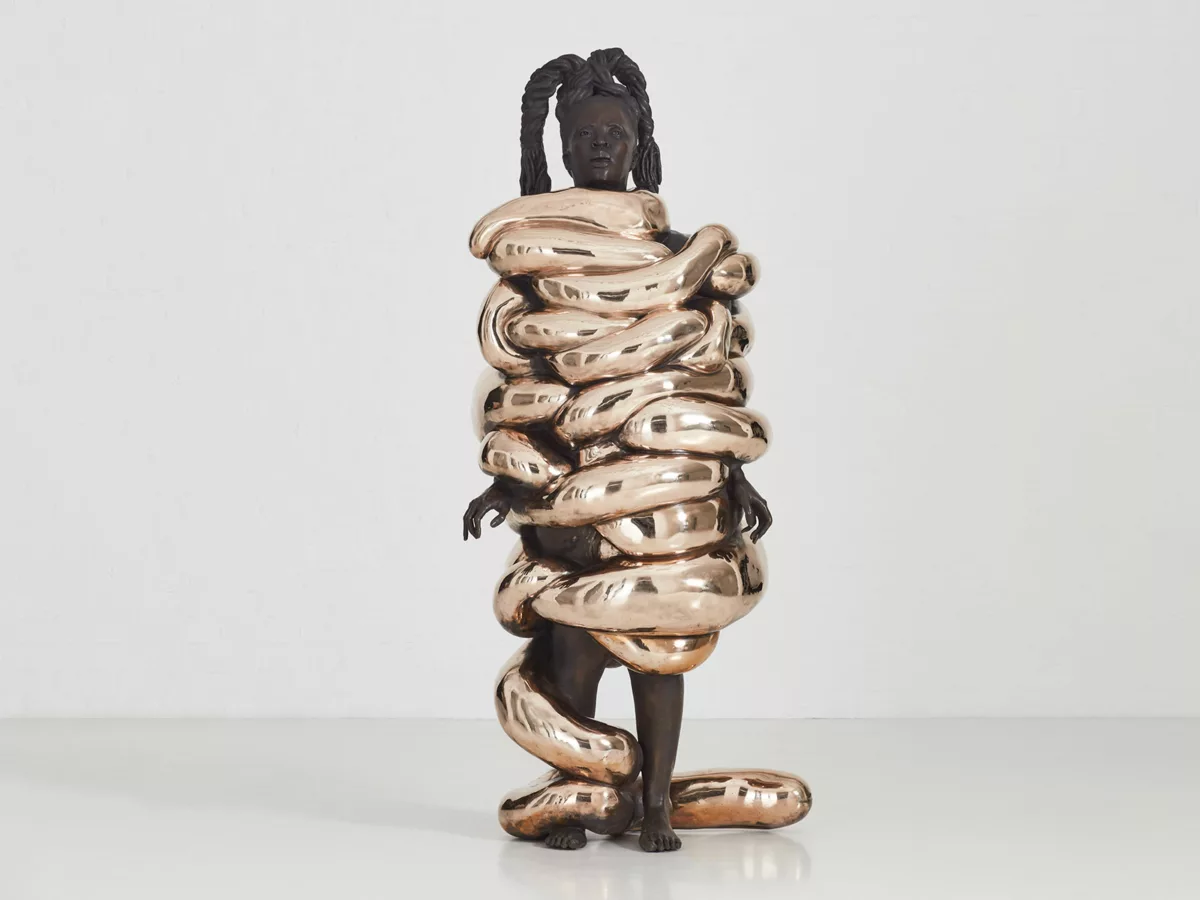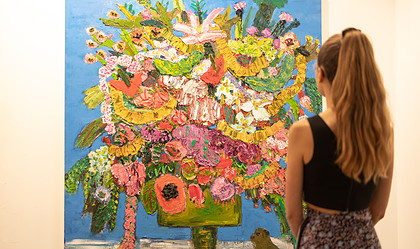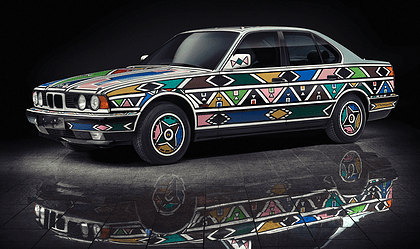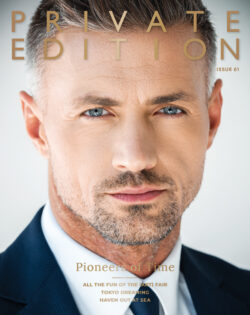It is impossible to avoid the gaze. Eyes, like ebony gemstones set against pearl backdrops, glare at you, daring you to look. They are questioning, inviting, provoking you with powerful intensity, urging you into a tantalising staring contest. The eyes staring at you are those of Zanele Muholi, the visual activist who uses the singular pronoun ‘they’, and whose portraiture has over two decades become a highpoint of the contemporary art world.
At any given moment, Muholi’s work is being shown in at least a dozen spaces around the world. Since debuting in New York’s Yancey Richardson Gallery in 2015, Muholi’s ongoing series of portraiture work, Somnyama Ngonyama (isiZulu for ‘Hail the Dark Lioness’) has travelled the globe, her work featuring at Documenta, the Venice Biennale and the São Paulo Biennale. Muholi’s artworks are among collections of the Guggenheim, New York’s Museum of Modern Art, and the Tate Modern in London.
Muholi is currently the highest-ranked person from the African continent on ArtReview’s ‘Power 100’ annual list of ‘the most influential people in art’, right behind Sir Steve McQueen, British film director and Oscar winner for Best Picture.
It is no wonder. Muholi’s images, executed in high-process, exaggerated black-and-white, are infused with symbolism and steeped in historic allusion and allegory. While the images stand on their own, they also parody early photographs, often ‘exotic’ images of Black people designed for a colonial gaze. They riff old tropes by ‘borrowing’ certain poses and paraphernalia to playfully comment on certain kinds of racist representation. These self-portraits feature the artist in enormous headdresses; in masks of soot; in turbans and wigs; in blankets, feathers, shells; and sometimes clad in clothes pegs or other cleaning accessories that acknowledge the artist’s mother, who was a domestic worker. The power is in the depiction – the fictionalised selves are always of an actor – never an object, never someone subjugated by the gaze.
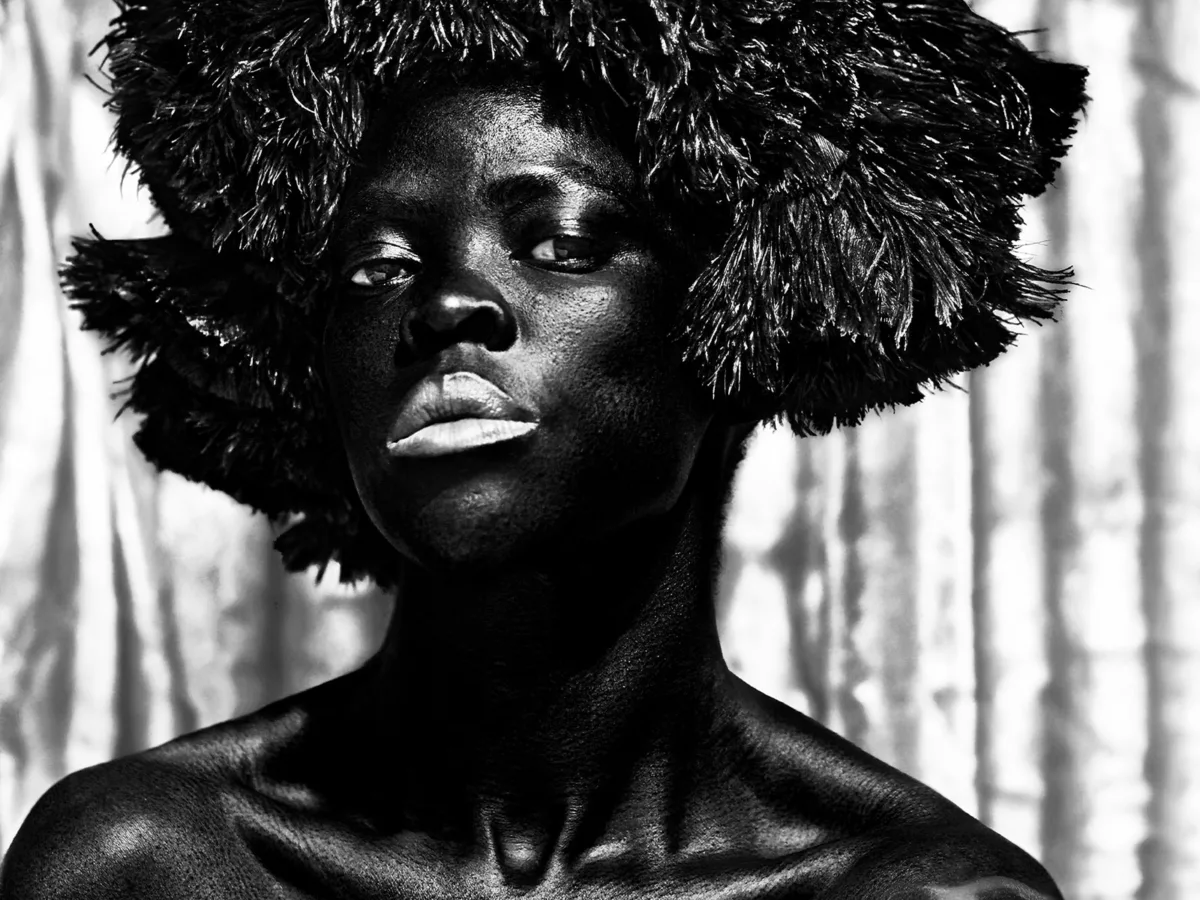
While there is a deliberate fierceness, even ferocity, in Muholi’s self-portraits, in person they are softness incarnate. Those eyes – so furious and blazing in their artworks – brim with gentler qualities: personal pain, laughter, vulnerability.
Born in the early-1970s, and raised by a single mother, Muholi says their first recollections of photos were often violent ones. ‘My early visual training came from images in the media. In the Eighties, there was a lot of violence, the State of Emergency, a lot of protests – images of people running, being chased. Those were the images we consumed as youngsters. Those are the images that shaped my life.’
Later, the artist became aware that images of their own community did not exist. ‘I picked up the camera because, at the time when I needed them the most, there were no images that spoke to me as a Black lesbian. At the height of the country’s transformation I needed to see myself. Photography became my therapy, a tool of expression that helped me survive and deal with personal issues.’
Such ‘issues’ have found new expression in Muholi’s latest work; the solo show at Southern Guild introduced to the public a series of bronze sculptures exploring themes ranging from sexual freedom to inherited taboos, to the ongoing stigmatisation of LGBTQI+ people. Other sculptures continue the artist’s critique of a violent patriarchy.
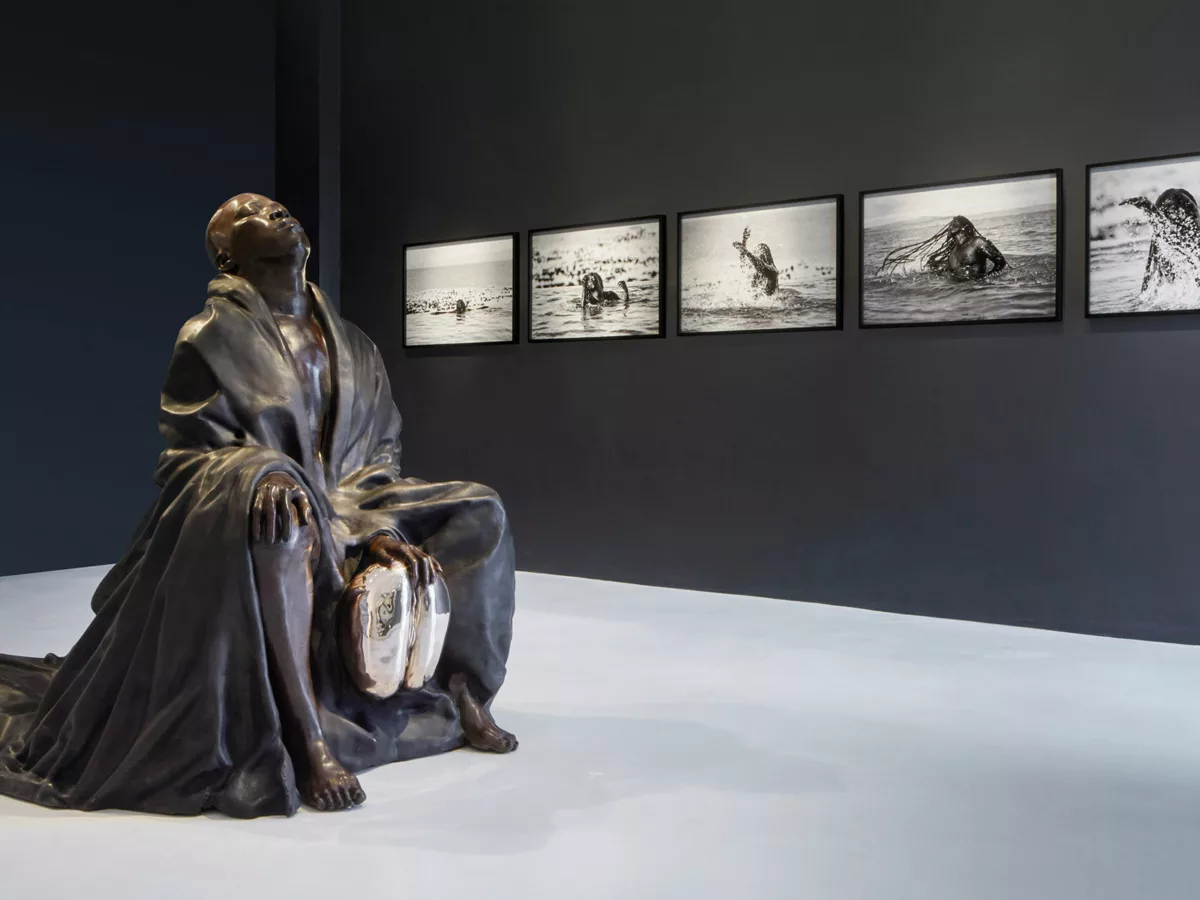
Bambatha is Muholi as a little girl entangled by what looks like a giant snake. Asked to talk about it, Muholi is gripped by emotion and explains that the work references numerous instances of women being butchered, dismembered, violated, having their intestines pulled out of their bodies. It is a three-dimensional representation of Muholi’s own trauma in response to such tragedies.
One sculpture is Umphathi (The One Who Carries), a large-scale uterus – a ‘self-portrait of being’, according to Muholi. ‘The uterus is my DNA, where I come from; it is the rite of passage that is common to all of us regardless of race, class, gender. It is a common space: you are born from someone, you come from that passage. Whether you are rich or poor, the womb becomes the original leveller. The uterus is my signature.’
It is an explicit attempt to provoke conversation, to bring the perplexity of the female anatomy into the open, particularly in an environment dominated by patriarchal, colonial and often patronising language.
‘These pieces are autobiographical,’ Muholi says. ‘They are just about my life, my body. I’m talking about things that are never said and also about what may be uncomfortable. Stories we don’t hear.’
Muholi says that it is because of all the untold stories, unheard voices and unseen people that they feel such an urgent need to produce work; Muholi remains first and foremost an activist, driven by a deep desire to create work that heals, that contributes to the cause of humanity.
‘This is why I take my camera everywhere, why I work all the time. Because sometimes I get this sense that I haven’t even started, and there is still so much work to be done.’
by Keith Bain
